There are three other ships in the United States Navy which were named after the state of Missouri besides the battleship USS Missouri (BB 63), and although she became associated with the history of the Japanese raid at Pearl Harbor, she never took part in the event. So, why is she known by so many around the world?
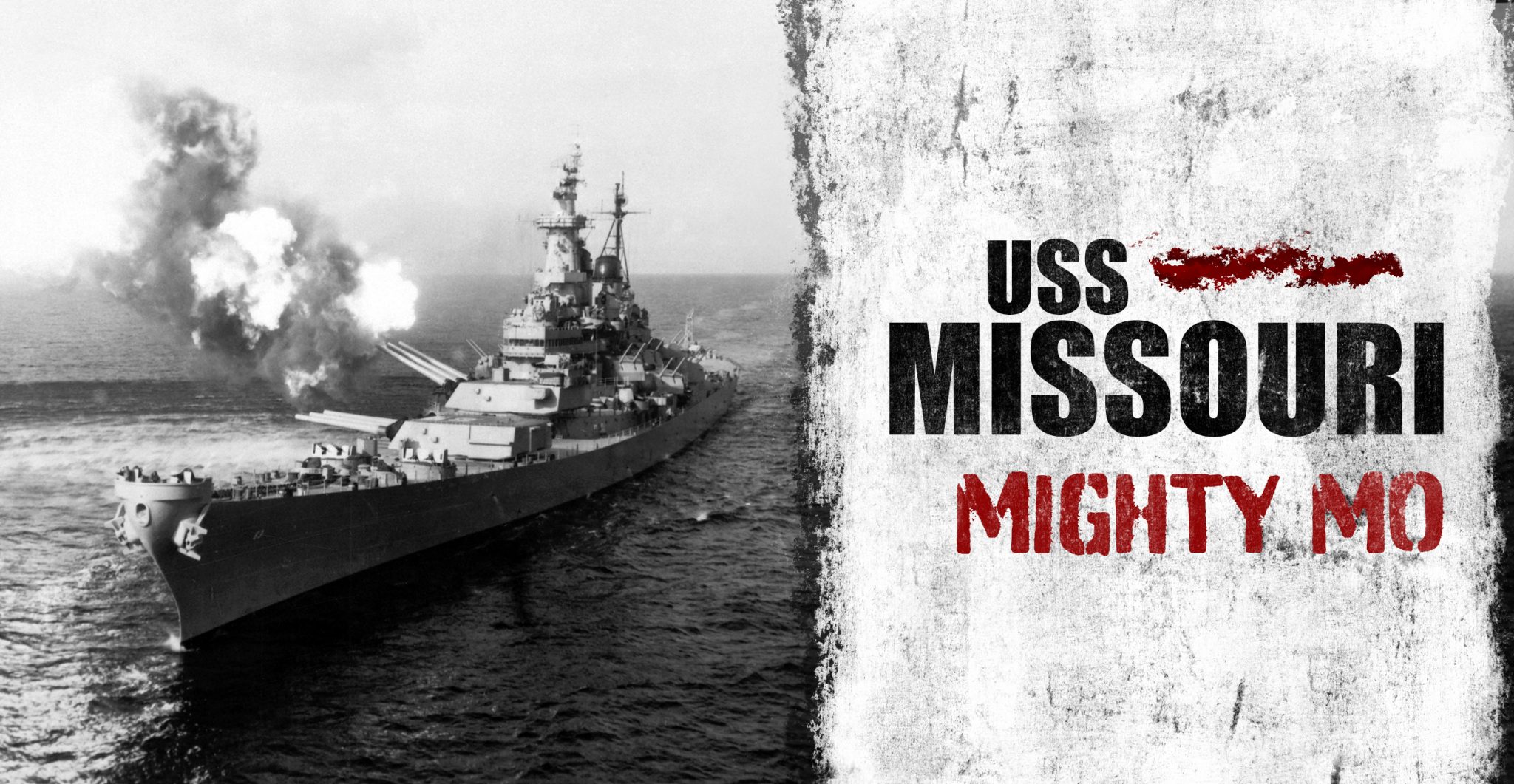
Missouri, a.k.a. “Mighty Mo” stands out in the history of the Second World War not just as the last battleship of the U.S. Navy, but also as the battleship which hosted the end of the Second World War in the Pacific.
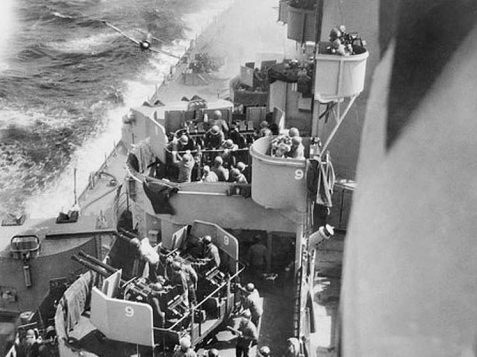
A kamikaze plane about to hit Missouri 11 April 1945
The life of Mighty Mo began after her commissioning on 11 June 1944 as the last Iowa-class battleship of the U.S. Navy. She had a full-load displacement of 58,000 long tons, a length of 887.2 feet and a beam that measured about 108 feet. At her maximum speed of 33 knots, she possessed a range of about 14,900 miles.
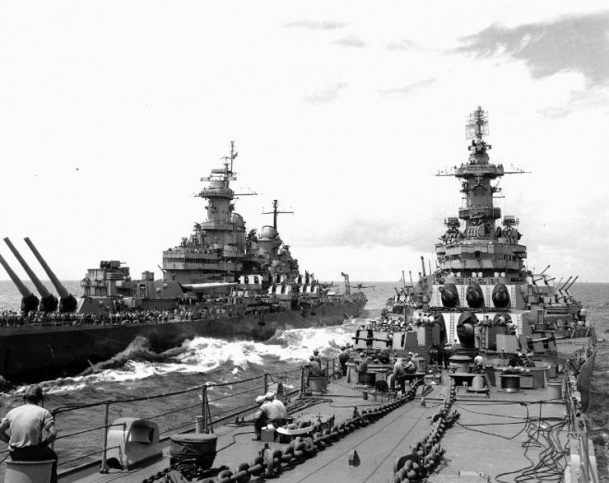
USS Missouri (BB-63) (left) transferring personnel to USS Iowa (BB-61), while operating off Japan on 20 August 1945.
Just like the rest of the Iowa-class battleships, her main armament comprised nine 16-inch .50 caliber Mark 7 guns which could fire shells that weighed up to 2,700 lb at a target 20 miles away. Subordinate armament comprised twenty 5-inch .30 caliber Mark 12 guns that could hit a target 10 miles away. She was also fitted with anti-aircraft guns to defend Allied aircraft carriers from air attacks.
https://youtu.be/gHW7xhCx_t0
Missouri was one of the battleships that took part in the invasion of Iwo Jima, which is known as the fiercest battle of the war’s Pacific theater.
On 18 March 1945, she was part of the battleship group that struck airfields and naval bases along the coast of Japan’s Seto Inland Sea. During this event, she gunned down four enemy planes and provided cover for the badly damaged carrier Franklin.
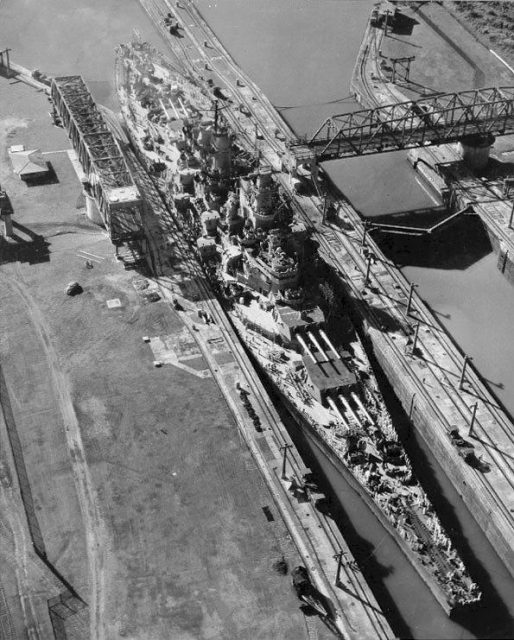 Missouri moves through the Panama Canal en route to the United States in October 1945.
Missouri moves through the Panama Canal en route to the United States in October 1945.
On March 24 and April 1, Mighty Mo was with the Task Force 58 battleship group during the raids at Okinawa. She shot down five airplanes, provided support in the downing of another six, helped repel numerous waves of attacks during the day and night of the invasion, and destroyed military and government infrastructure. Also, the sinking of the Japanese submarine I-56 was initiated by Missouri, whose radar had detected it.
After her contributions at Okinawa, she took part in the bombardment of the Japanese home islands. Her battle group devastated Japanese infrastructure such as the Nihon Steel Company and the Wanishi Ironworks, in Hokkaido, and several other industrial targets in Honshū, before the release of the second atomic bomb which would lead to Japan’s surrender in 1945.
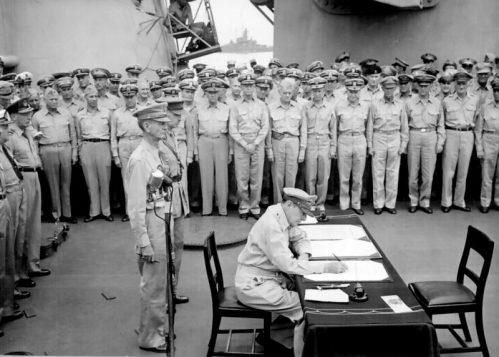
Allied sailors and officers watch General of the Army Douglas MacArthur sign documents during the surrender ceremony aboard Missouri on 2 September 1945. The unconditional surrender of the Japanese to the Allies officially ended the Second World War.
The signing of the official instrument of surrender was done aboard Missouri, and thus, the end of the war was marked onboard this ship, the main fact for which she is remembered.
The outbreak of the Korean War saw Missouri back in action, providing support and going on bombardment missions. Her last of such missions was the bombardment of Kojo on 25 March 1953.
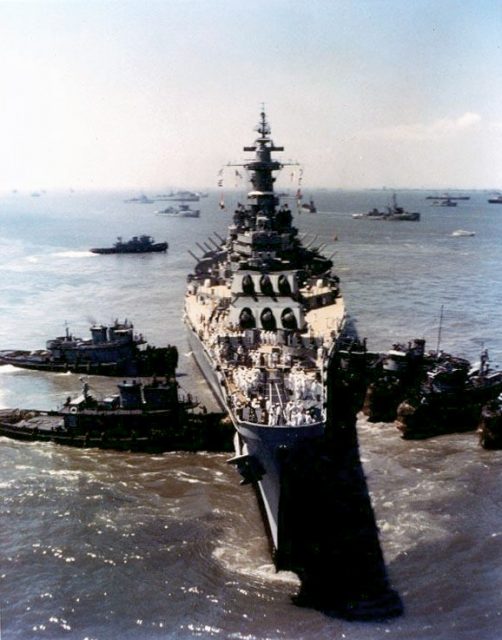
Missouri was accidentally grounded early on the morning of 17 January 1950.
On 26 February 1955, she was decommissioned. Following her decommissioning, one idea to move Missouri to Pearl Harbor as a museum ship was thwarted by the National Park Service because of fears that with her towering popularity she would overshadow Arizona, the battleship that had become a symbol of the Japanese attack on Pearl Harbor following her very dramatic end.
Missouri was instead mothballed in Bremerton, west of Seattle, Washington. However, more than 30 years later, she was reactivated and modified during the 600-ship Navy project.
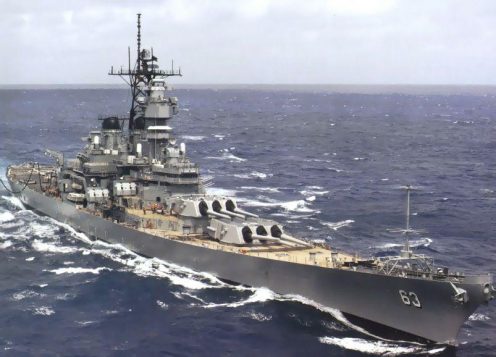
USS Missouri at sea in her 1980s configuration
The resurrected version was equipped with Quad Cell Launchers to fire Harpoon missiles and Armored-box launchers for firing Tomahawk missiles. For protection against enemy missiles, a Phalanx CIWS was installed on the ship.
In 1991, during the Gulf War, she was back in combat again, serving until 31 March 1992, when she saw her final decommissioning.
Missouri received 11 battle stars throughout her lifetime of service, and was used by the USS Missouri Memorial Association as a museum ship at Pearl Harbor after her retirement.
More photos
A kamikaze plane about to hit Missouri 11 April 1945
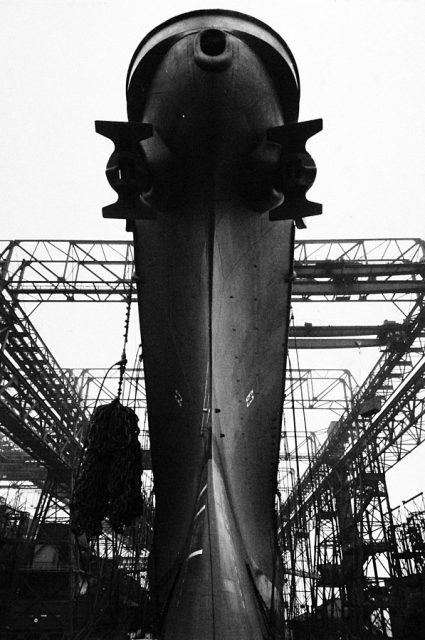
USS Missouri (BB 63) prior to her being launched at the New York Navy Yard, January 29, 1944. Note the unusual view of the bow.
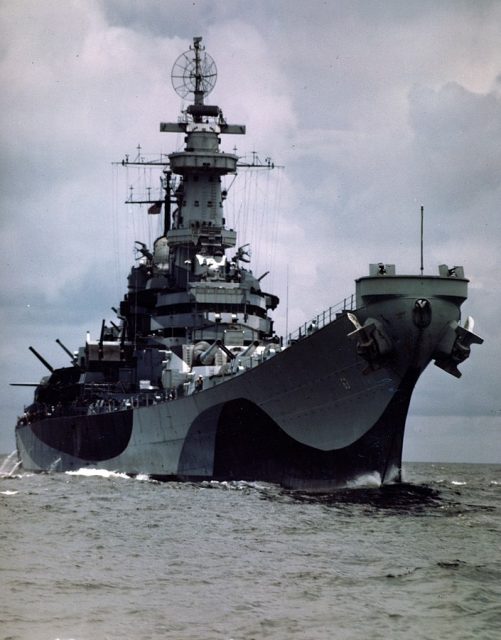 USS Missouri (BB-63). Photographed while on her shakedown cruise, August 1944.
USS Missouri (BB-63). Photographed while on her shakedown cruise, August 1944.
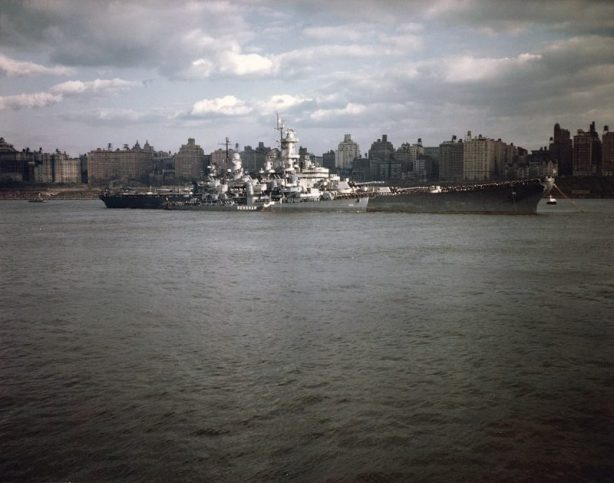
The U.S. Navy battleship USS Missouri (BB-63), with the destroyer USS Renshaw (DD-499) alongside, manning the rails during Navy Day ceremonies in the Hudson River, New York City (USA).
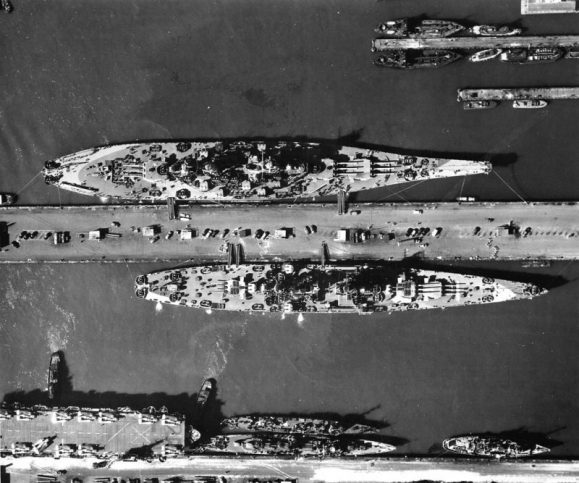
Aerial view of warships at the base piers of Norfolk Naval Base, Virginia (USA), circa August 1944. Among them are: the battleship USS Missouri (BB-63), the largest ship; the battlecruiser USS Alaska (CB-1), on the other side of the pier; the escort carrier USS Croatan (CVE-25), and two destroyers, a Fletcher-class destroyer at the pier and a Clemson/Wilkes-class-destroyer moored outboard.
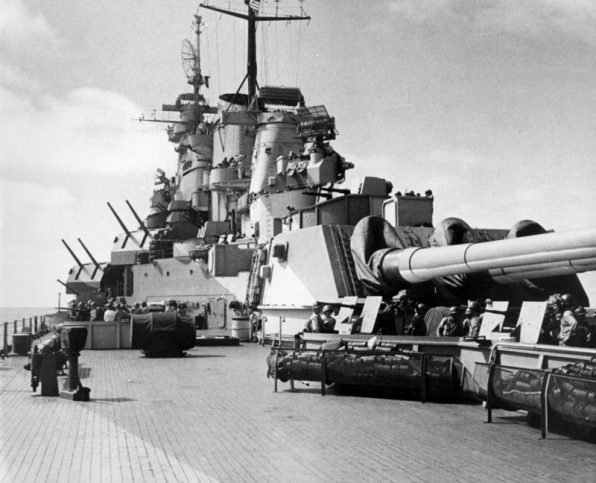
View of the U.S. Navy battleship USS Missouri (BB-63) looking aft towards the number three battery and the superstructure. Note the 20 mm antiaircraft gun mounts in the foreground and the SG surface-search radar antenna atop both mainmasts and the circular antenna for the SK-2 air-search radar on the foremast. Also visible are two Mk 37 gun directors with Mk 12 fire control radar for the 12.7 cm artillery and the Mk 38 gun director with Mk 8 fire control radar (“hedgehog”) for the 40.6 cm artillery.
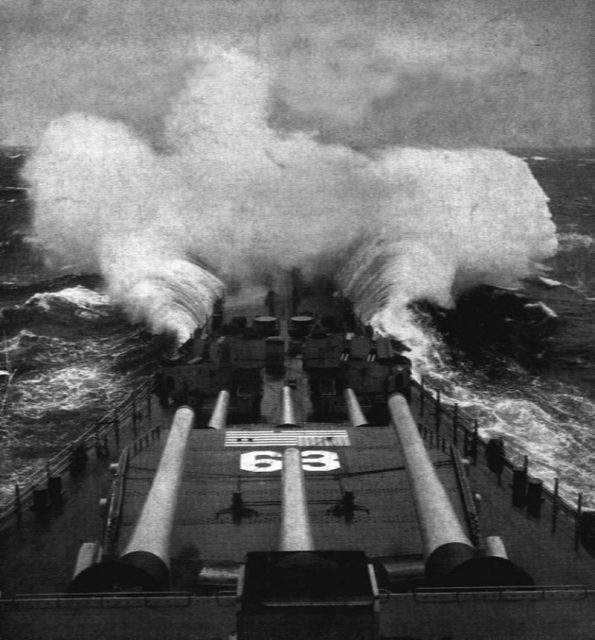
View of the forecastele of the U.S. Navy battleship USS Missouri (BB-63) in heavy seas.
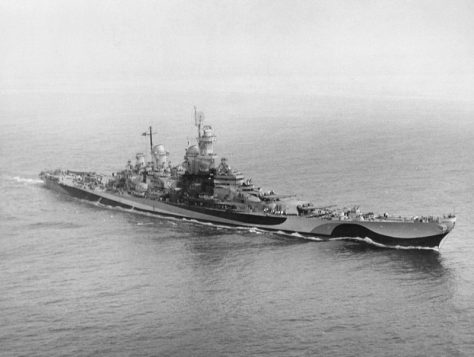
The U.S. Navy battleship USS Missouri (BB-63) during battle practice in Chesapeake Bay on 1 August 1944. She is wearing Camouflage Measure 32 Design 22D.
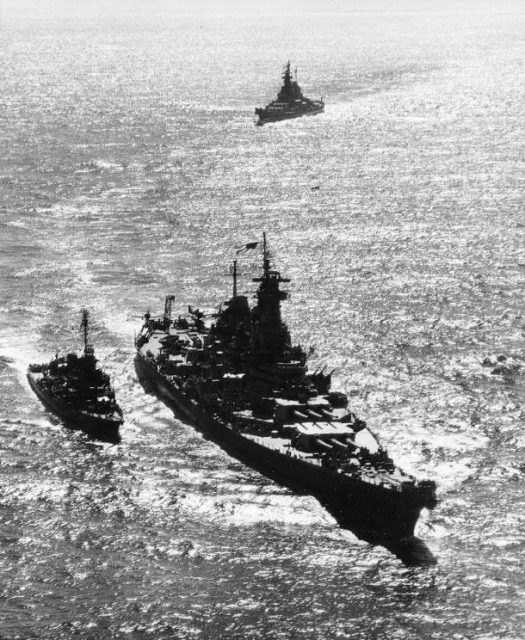
USS Missouri leading USS Iowa into Tokyo Bay, Japan, 30 August 1945. Note destroyer USS Nicholas in escort.
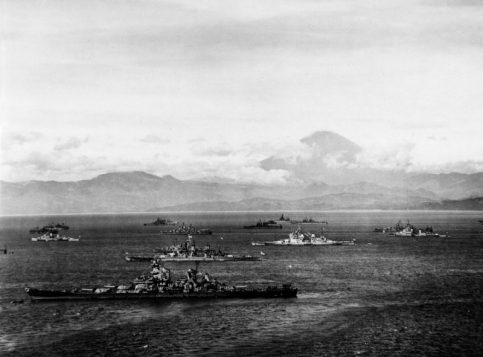
Warships of the U.S. Third Fleet and the British Pacific Fleet in Sagami Wan, 28 August 1945, preparing for the formal Japanese surrender a few days later. Mount Fuji is in the background. Nearest ship is USS Missouri (BB-63), flying Admiral William F. Halsey’s four-star flag. The British battleship HMS Duke of York is just beyond her, with HMS King George V further in. USS Colorado (BB-45) is in the far center distance. Also present are U.S. and British cruisers and U.S. destroyers.
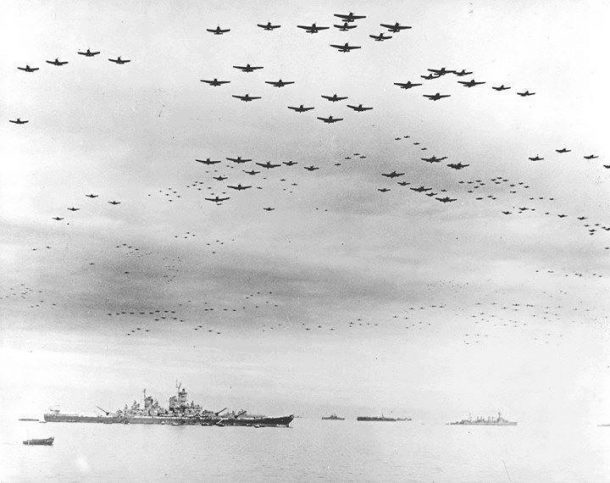
American aircraft fly over USS Missouri after the surrender.
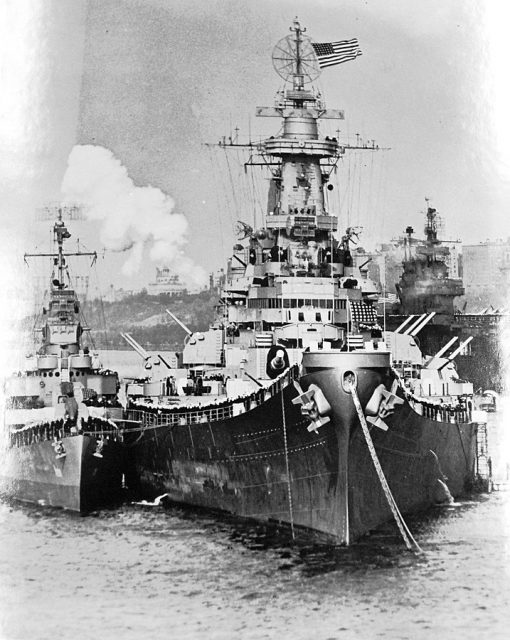
USS Renshaw (DD 499) dwarfed in comparison, stands alongside USS Missouri (BB 63) to pipe President Harry S. Truman onboard for Navy Day luncheon, October 1945
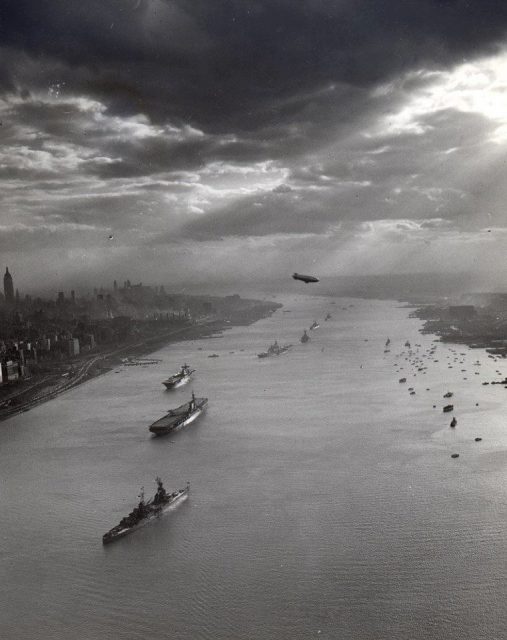
USS Augusta, USS Midway, USS Enterprise, USS Missouri, USS New York, USS Helena, and USS Macon in the Hudson River in New York, New York, United States for Navy Day celebrations, 27 October 1945.
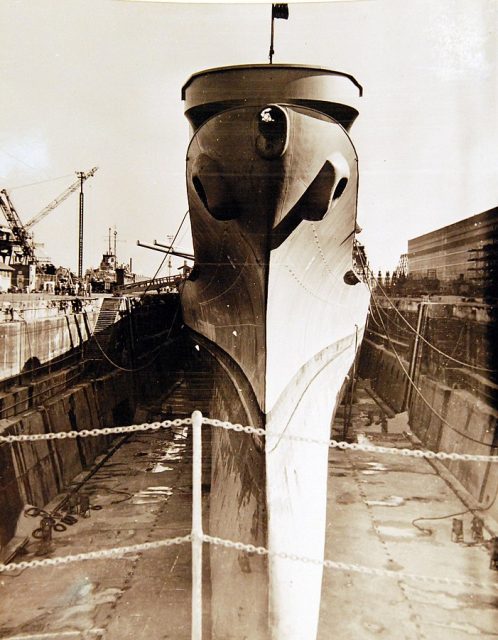
USS Missouri (BB-63) in drydock at Norfolk Navy Yard, Norfolk, Virginia, November-December 1949.
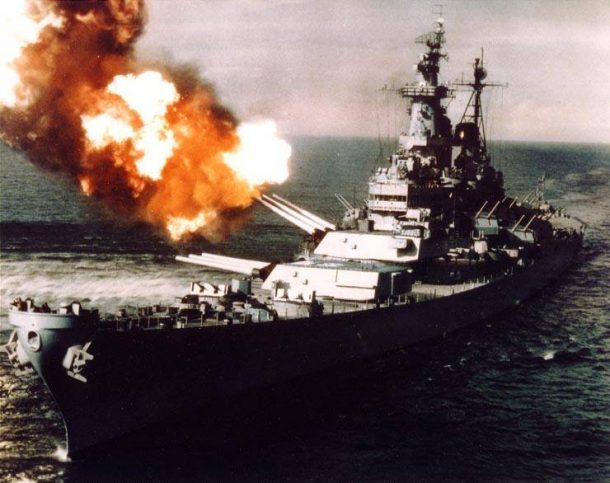
Missouri (BB-63) bombarding Communist positions off Chong Jin, Korea. She is only about forty miles from the Soviet border, so all hands are at General Quarters, 21 October 1950.
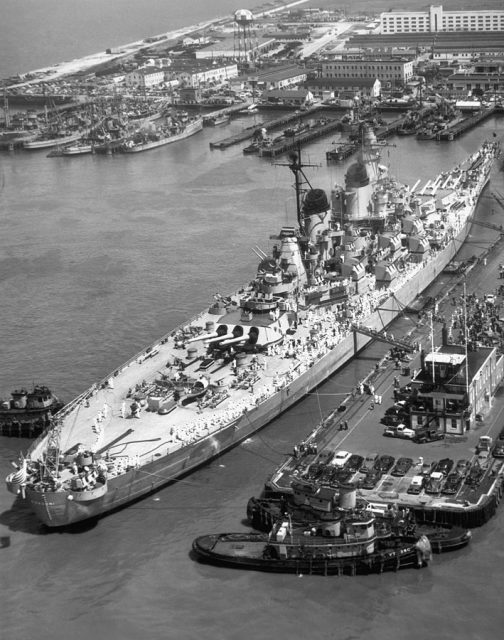
The U.S. Navy battleship of USS Missouri (BB-63) upon arrival at Norfolk, Virginia (USA), after service in the Korean War on 27 April 1951.
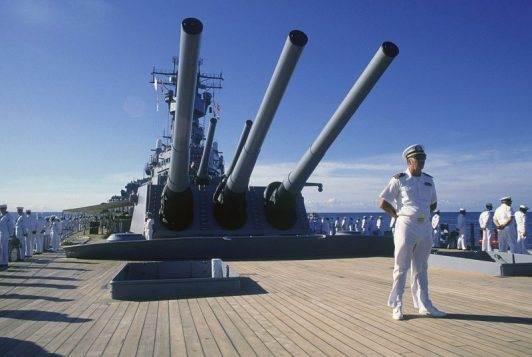
Crew members man the rail as the battleship USS Missouri (BB-63) arrives in port prior to a cruise to Australia and around the world, 1986.
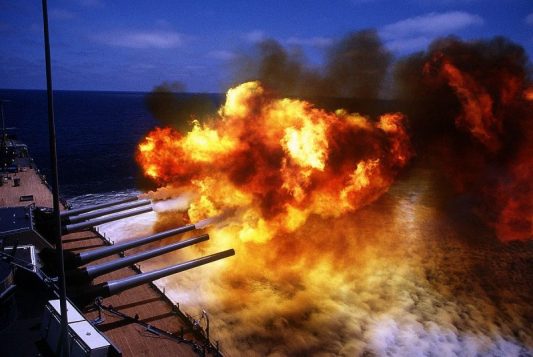
The No. 1 and 2 Mark 7 16-inch/50-caliber gun turrets are fired during a main battery firing exercise aboard the battleship USS Missouri (BB-63). The ship is en route to Sydney, Australia, during a cruise around the world, 1986.
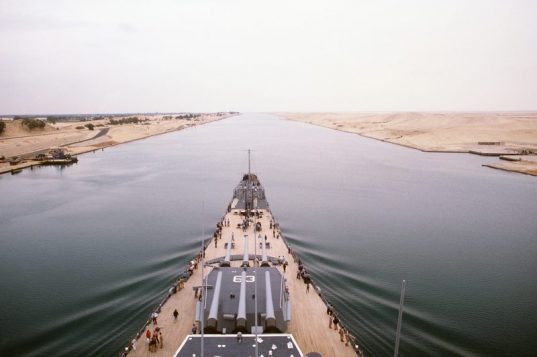
The battleship USS Missouri (BB-63) transits the Suez Canal while en route to Istanbul, Turkey. The ship is on an around the world shakedown cruise, 1986.
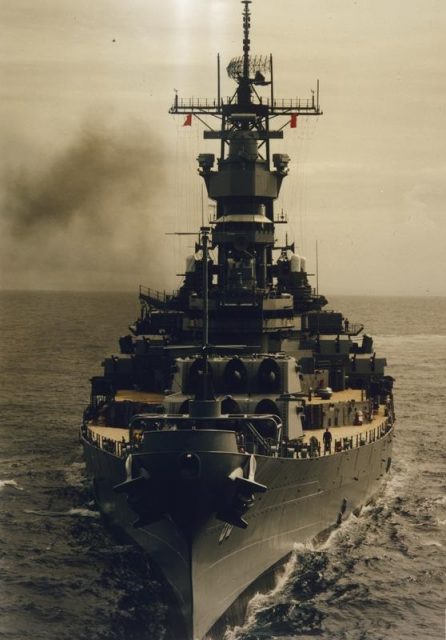
The Iowa class battleship USS Missouri (BB-63) arrives off the coast of Australia for a ceremonial visit to Australia in honour of the Royal Australian Navy’s 75th anniversary.
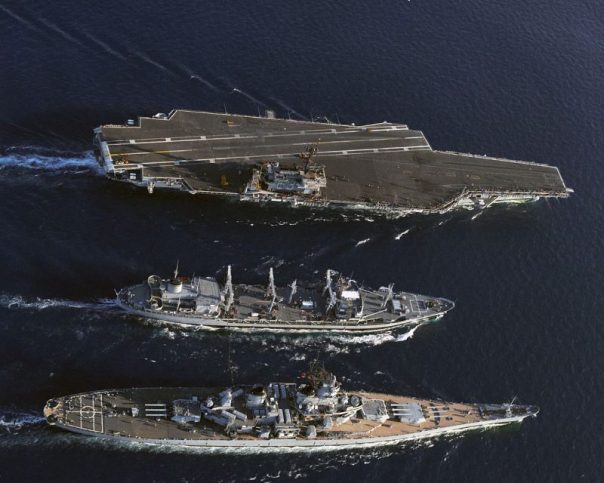
An aerial starboard view of the fleet oiler USNS Kawishini (T-AO-146), center, the battleship USS Missouri (BB-63), bottom, and the aircraft carrier USS Kitty Hawk (CV-63), participating in an underway replenishment operation, 25 July 1986.
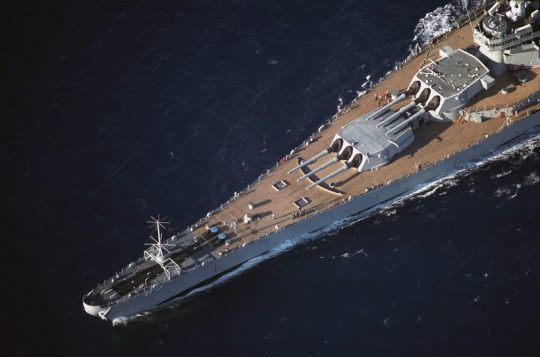
An aerial port view of the forward half of the battleship USS Missouri (BB-63) while the ship is underway.
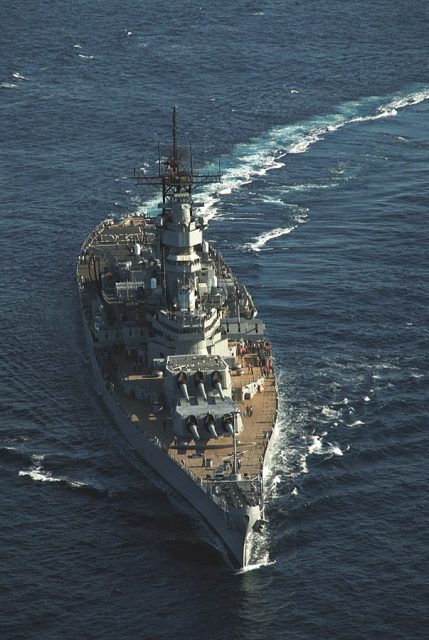
An aerial bow view of the battleship USS Missouri (BB-63) underway.
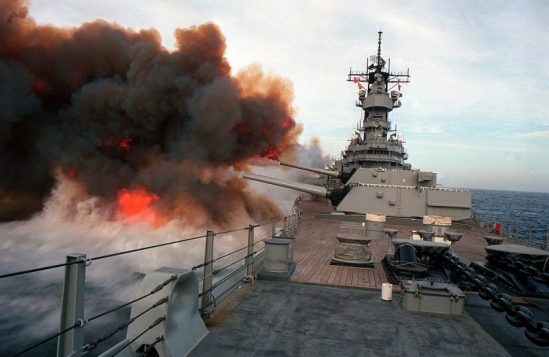
Smoke billows from the muzzles of the Mark 7 16-inch/50-caliber guns in each of the three main gun turrets aboard the battleship USS Missouri (BB-63) after the ship fired multiple salvos during exercise RimPac “90 near Hawaii.
Read another story from us: Pearl Harbor Survivor – The USS California “Prune Barge”
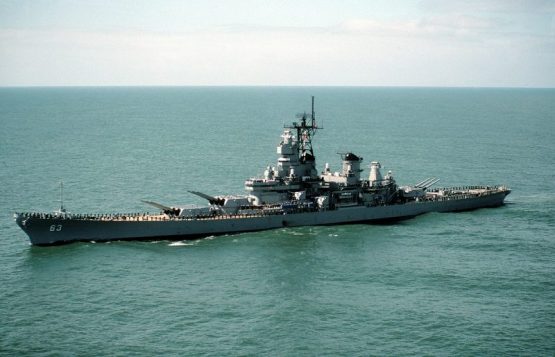
An elevated port bow view of the battleship USS Missouri (BB-63) en route to recommissioning in San Francisco.





